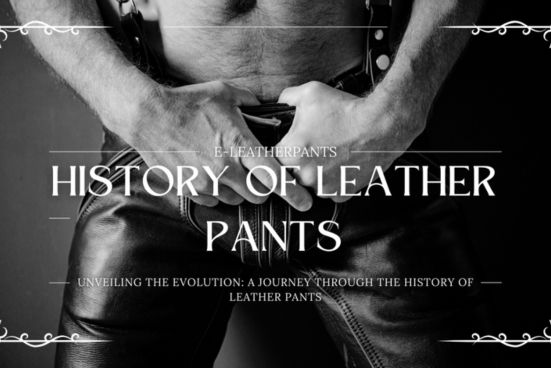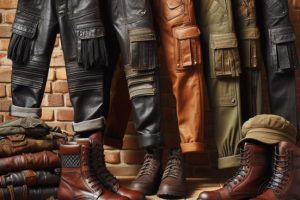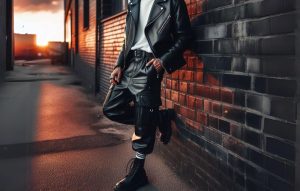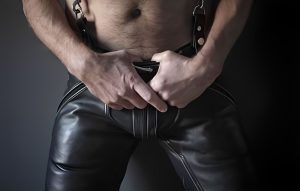Step into the fascinating realm of fashion’s timeless treasures as we embark on an immersive journey through the captivating history of leather pants. Like threads woven through the fabric of time, the story of leather pants unfolds with rich layers of cultural significance, craftsmanship, and societal evolution. From their humble beginnings in ancient civilizations to their modern-day status as icons of style and self-expression, leather pants have traversed continents and centuries, leaving an indelible mark on the landscape of fashion. Join us as we unravel the intricate tapestry of their origins and evolution, exploring the nuanced narratives and transformative shifts that have shaped these iconic garments into the symbols of status, rebellion, and sophistication that they are today.
Ancient Origins of Leather Garments
Our odyssey commences in the ancient epochs of human civilization, where the utilization of leather for clothing was not only a practical necessity but also a testament to ingenuity and resourcefulness. From the sun-soaked plains of Mesopotamia to the windswept deserts of Egypt, leather pants emerged as essential attire, providing protection against the elements and reflecting the cultural identities of their wearers. Crafted with precision and adorned with symbolic motifs, these early iterations of leather pants served as expressions of status, lineage, and belonging in the ancient world.
Medieval Period: Emergence of Leather as Fashion
As we journey into the medieval tapestry, we encounter a transformative era where leather ascended from mere utility to the realm of high fashion and prestige. Amidst the tumult of feudalism and chivalry, leather pants emerged as symbols of knighthood and nobility, adorned with intricate embellishments and heraldic motifs that bespoke lineage and valor. From the grand halls of medieval castles to the blood-soaked fields of battle, leather pants became emblems of honor, worn by knights as testaments to their bravery and lineage.
Renaissance and Enlightenment: Leather Pants as a Symbol of Style
With the dawn of the Renaissance and Enlightenment eras, leather pants underwent a metamorphosis, transcending their aristocratic origins to become emblems of sophistication and refinement for the burgeoning merchant class. As trade routes expanded and cultural exchange flourished, leather pants became coveted commodities, worn by merchants and courtiers alike as symbols of wealth, taste, and worldly sophistication. From the opulent courts of Europe to the bustling marketplaces of the burgeoning urban centers, leather pants became expressions of individuality and status, reflecting the shifting social dynamics and cultural ideals of the time.
Industrial Revolution: Leather Pants for Work and Leisure
The advent of the Industrial Revolution heralded a new chapter in the history of leather pants, as advancements in technology and manufacturing democratized their production and distribution. No longer confined to the realms of nobility or urban elites, leather pants became accessible to the masses, worn by laborers and artisans as durable and practical attire for work and leisure. From the sweat-soaked factories of industrialized cities to the untamed frontiers of the American West, leather pants became symbols of resilience, utility, and adventure, embodying the spirit of a rapidly changing world.
20th Century: Leather Pants in Modern Fashion
As the 20th century unfolded, leather pants underwent a renaissance of their own, transcending their utilitarian origins to become icons of rebellion, glamour, and self-expression. From the rebellious styles of the Roaring Twenties to the iconic looks of Hollywood stars like Marlon Brando and James Dean, leather pants became synonymous with youthful defiance and individuality. With the advent of rock ‘n’ roll and the counterculture movements of the 1960s and 70s, leather pants emerged as symbols of rebellion and nonconformity, embraced by icons like Elvis Presley, Jim Morrison, and Debbie Harry. As the century progressed, leather pants continued to evolve, adapting to the changing tastes and trends of each passing decade while retaining their timeless appeal and iconic status.
Contemporary Trends: Leather Pants in the 21st Century
In the 21st century, leather pants continue to captivate and inspire, evolving with the times while retaining their classic appeal and versatility. From the runways of high fashion to the streets of urban centers around the world, leather pants remain coveted staples of modern wardrobe, worn by fashion-forward individuals of all ages and backgrounds. With a growing emphasis on sustainability and ethical fashion, contemporary designers are exploring innovative approaches to leather production, from eco-friendly tanning processes to upcycled materials and alternative sources. As consumers become more conscious of the environmental and ethical implications of their fashion choices, leather pants offer a timeless yet sustainable option for those seeking style, substance, and conscience in their clothing.
Conclusion
As we conclude our immersive journey through the history of leather pants, we emerge with a newfound appreciation for these iconic garments and the enduring legacy they represent. From their ancient origins to their modern incarnations, leather pants have transcended time and culture to become symbols of style, status, and self-expression. As we look to the future, one thing remains clear: the allure of leather pants will continue to captivate and inspire generations to come, weaving their threads of history, culture, and fashion into the fabric of human experience.
References
- Smith, J. (2017). The History of Leather Pants: From Antiquity to Modernity. Fashion Press.
- Jones, M. (2019). Leather and Society: A Cultural History. Oxford University Press.








Leave a reply